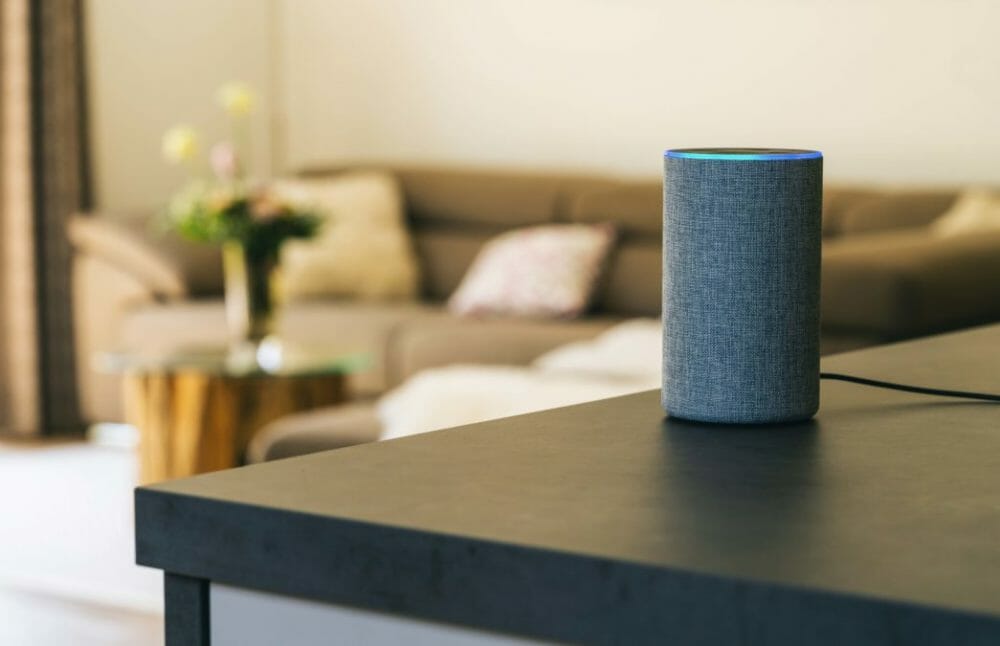This time ten years ago, the idea of using voice assistants for commerce seemed like something straight out of an episode of The Jetsons. The show’s Rosie the Robot Maid would shop for groceries, prepare dinner, set the table and do the laundry, all from a voice command. She was flawlessly integrated into the Jetson family’s daily lives, providing seamless and convenient experiences for them all.
Jump forward to the modern-day and those once futuristic experiences are here. I now walk down the street, blurting out “Alexa…groceries, add a pint of milk” or if I can’t be bothered to make dinner, I’ll go ahead and shout “order me a pizza” and have it waiting for me to pick up after work.
This is pretty Jetson’s like, and I, along with billions of consumers around the world, are embodying a Sci-Fi shopper mentality. However, the experience isn’t quite living up to its potential.
The battle between Google Home, Siri and Amazon Alexa is raging and brands are chucking $210B a year to create flashy tech-savvy retail experiences for us all, but the reality of it all isn’t that great. Latest research from Elastic Path shows that most brands are totally missing the mark when it comes to delivering the best possible experiences.
37% of consumers said errors and miscommunication when leveraging voice stops them from using the technology. And, 11% avoid the technology because they don’t trust it to purchase their desired items correctly. To me, this is the sound of a missed opportunity.
Get on board with voice
Customers may not have fully embraced voice technology yet, but that doesn’t mean it’s not a valuable investment for brands. They just haven’t convinced their customers that these technologies provide convenience and simplicity that the Sci-Fi shopper craves.
Of the Sci-Fi shoppers who have used voice technology to make purchases though, 22% use it multiple times a week, and 21% use it at least weekly. Creating an experience that truly adds value to a shopper’s busy life will only continue to breed appetite for the tech. For example, I recently bought a set of Jabra Elite Active 65t headphones, which are Alexa, Siri and Google Assistant-enabled. The experience reinforced my fascination with how close we are to talking to everything.
DWS 2019: IPsoft CEO dissects the AI and ROI problem
As we grow increasingly confident and comfortable using voice technology to make purchases, it becomes routine. Do you want to be missing out on the consumers that are ready and willing to buy groceries (69%), healthcare and beauty products (67%), books, movies and music (59%) clothing and accessories (43%) via voice commerce?
Convenience over everything
As long as brands continue to prove that voice technologies improve the day-to-day experience, it will only become increasingly integrated into customers’ lives – just like Rosie the Robot Maid was for the Jetsons.
Sci-Fi shoppers don’t want gimmicks. We aren’t interested in technology just for the novelty of it. The convenience of a voice experience can quickly turn to frustration if a brand screws up the execution or forces customers to re-enter billing information for every purchase they make.
We want new experiences that make our lives frictionless: better to us means easier and faster. Convenience is king — and we don’t have the patience for brands that aren’t delivering this. But for those brands that can get voice right there is a ton of potential.
A frictionless approach
Voice commerce will increasingly become part of our daily lives and presents brands with the opportunity to bring the purchase experience to shoppers in more seamless ways. Not because it’s trendy but because their needs are met in the way they expect them to be, improving the day-to-day experience rather than becoming just another marketing ploy.
Modern shoppers want to order products via voice devices quickly, access accounts without typing in passwords, reorder products through smart devices and more with as little effort as possible. As my wife says, “If they don’t have Apple Pay and know my address, I don’t want to bother.” And I know she’s not alone. Every experience needs to become more like ordering an Uber.
Six surprising ways businesses are impacted by RPA, OCR and NLP
The Sci-Fi Shopper doesn’t view the ways they interact with a brand separate channels — whether that be through Google, Siri or Amazon Alexa — in a smart dressing room mirror or on via app. Meaning brands can’t treat them that way any longer. The solution for this starts with transforming backend technology to integrate customer data and experiences, and that needs to happen way before the decision is made to start pouring money into the likes of voice commerce or virtual reality.
With the right tech, brands can enable consumers to purchase almost without thinking, anytime and anywhere – making any experience shoppable. After all, everyone wants a Rosie the Robot Maid in their lives to make things easier and convenient, right?

Written by Darin Archer, CSO of Elastic Path







